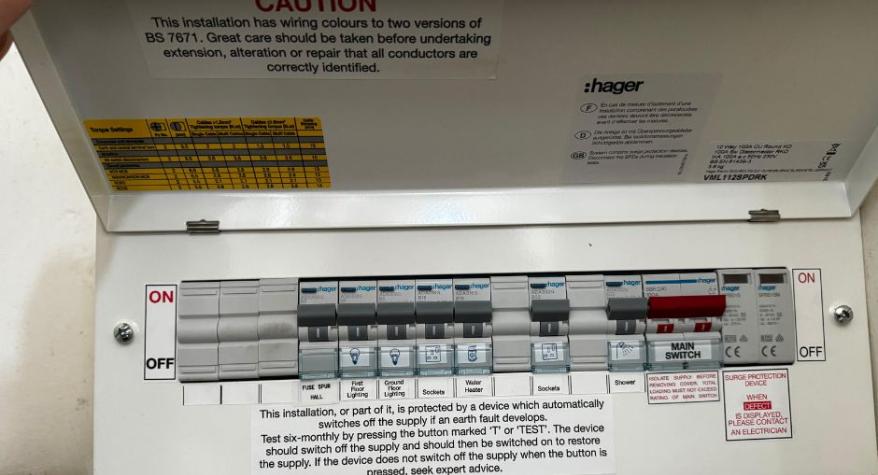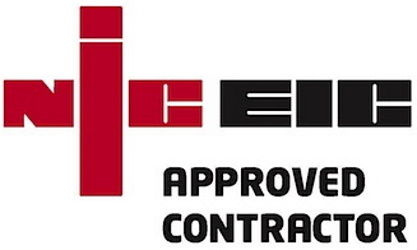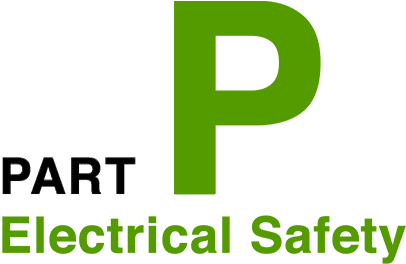When undertaking home renovations, one of the most critical upgrades often overlooked is the consumer unit, formerly known as the fuse box.
Upgrading Your Consumer Unit - A Key Step in Home Renovation
This component is the heart of your home's electrical system, distributing electricity safely across different circuits. Upgrading your consumer unit during renovations is not just about enhancing the capacity of your electrical system to handle modern, high-demand appliances; it's about safety and compliance. Outdated consumer units often fail to meet current electrical safety standards, posing risks such as electrical fires and shocks. Moreover, a modern consumer unit aligns your home with the latest building regulations, ensuring that any additional renovations, like kitchen refits or extensions, are fully compliant. This not only safeguards your household but also secures the functionality and efficiency of your electrical system in the long run.
Why Upgrade?
Home renovations such as kitchen refits, bathroom upgrades, and extensions often necessitate more from your electrical system than what your old consumer unit can provide. These extensive modifications typically require additional circuits or significant power adjustments to support new appliances and fixtures. An outdated consumer unit might not only struggle with the increased load but also may pose a safety hazard if pushed beyond its limits. Upgrading your consumer unit during these renovations ensures that your home's electrical system can accommodate these changes safely and efficiently, avoiding the risks of overloading circuits which can lead to electrical fires or system failures.
Moreover, compliance with building regulations is a critical aspect of any renovation project. Electrical standards, which are part of these regulations, have evolved significantly to enhance safety and efficiency. Upgrading to a modern consumer unit ensures that your home's electrical system complies with the latest safety standards, such as the BS 7671 Wiring Regulations. This is not only a legal requirement but also a crucial factor in maintaining the validity of your home insurance and increasing your property's marketability. A compliant, updated electrical system provides peace of mind, knowing that your home meets all required safety benchmarks and is prepared for future technological advancements or further renovations.
Upgrade Process
Before the upgrade process begins we start with a thorough assessment of the existing electrical system and a detailed plan to ensure that the new consumer unit can handle future demands and comply with current safety standards. The first step is the removal of the old fuse box, a task that should be carried out by a certified electrician to avoid any risks associated with handling outdated and potentially unsafe electrical components. This involves disconnecting the power supply to ensure a safe working environment, followed by carefully dismantling the old unit and its connections.
Once the old unit is removed, the installation of the new consumer unit begins. Modern consumer units are equipped with RCBOs (Residual-Current Circuit Breakers with Overcurrent Protection), SPDs (Surge Protection Devices), and AFDDs (Arc Fault Detection Devices). RCBOs provide a higher level of protection by combining the functions of an RCD (residual-current device) and an MCB (miniature circuit breaker), which protects against both overcurrent and earth faults. SPDs are crucial for protecting electrical appliances from voltage spikes, while AFDDs are designed to prevent electrical fires by detecting and disconnecting arcs, which can occur from poor connections or damaged wires.
The final step in the upgrade process involves a comprehensive testing and certification phase to ensure that the new system complies with BS 7671 Wiring Regulations. This includes testing each circuit independently to verify that all components are functioning correctly and safely. The electrician will also ensure that the installation has adequate labelling and that circuit configurations are clear, making future maintenance or modifications easier and safer. Upon completion, a certificate of compliance is issued, confirming that the upgraded consumer unit meets all regulatory requirements and safety standards.
Benefits of Upgrading
Upgrading your consumer unit is a critical step in enhancing the overall electrical safety of your home. By replacing outdated fuse boxes with modern consumer units equipped with RCBOs, SPDs, and AFDDs, homeowners significantly reduce the risk of electrical fires and shocks. These modern devices are designed to detect and interrupt faults much quicker than old systems, effectively preventing potential dangers that can arise from circuit overloads and electrical faults. Additionally, the installation of SPDs guards sensitive electronics against voltage spikes caused by external sources like lightning strikes or internal events such as switching surges.
Another key benefit of upgrading the consumer unit is compliance with the latest electrical regulations, such as the BS 7671 Wiring Regulations. This compliance is not only a British Standard but also crucial for ensuring that your home’s electrical installations are recognised as safe under insurance policies. Furthermore, when selling a property, a compliant and modern electrical system can significantly enhance its appeal to potential buyers, providing a clear indication that the home is well-maintained and up-to-date. This compliance also facilitates smoother transactions by minimising the legal and safety concerns that might otherwise complicate or delay property sales.
Moreover, the capability of a modern consumer unit to support more appliances with fewer power outages is an essential benefit for any contemporary home. As households today use an increasing number of high-demand appliances and sophisticated technology, the need for a robust electrical system that can handle such loads without frequent tripping or failure is more critical than ever. Upgrading the consumer unit ensures that new circuits can be added safely, and existing ones can handle greater loads efficiently. This means fewer service interruptions and a more reliable power supply, enhancing the comfort and convenience of your home life.
Homeowners
Whether it’s a kitchen makeover, a bathroom transformation, or adding an extension to the property, these substantial modifications often require updates to the home’s electrical system to ensure safety and functionality. These homeowners should understand the critical importance of integrating an upgraded consumer unit into their renovation plans. Not only does this safeguard your investment by enhancing safety and efficiency, but it also ensures that all modifications are up to code, which is vital for both current living and future resale purposes.
Common Concerns
One of the foremost concerns for homeowners considering an upgrade to their consumer unit is the cost and the duration of the project. The financial aspect can vary depending on the complexity of the installation and the specifications of the new unit. However, homeowners must view this expense as an investment in their property's safety and compliance. The duration of the upgrade typically spans a few days, during which the power may need to be shut off intermittently. By choosing a qualified and experienced electrician, homeowners can ensure that the upgrade is executed efficiently and effectively, minimising any inconvenience.
Temporary disruptions during the upgrade process, such as power outages and the presence of engineers, are often points of contention for homeowners. It's important to balance these short-term inconveniences against the long-term benefits of a modern and compliant electrical system. Upgraded consumer units significantly enhance the safety of a home by reducing the risk of electrical fires and system failures. Additionally, these upgrades can accommodate more modern appliances and can significantly reduce the chances of electrical issues, which contributes to a smoother, more reliable power supply.
Lastly, the impact on property value and the importance of compliance documentation cannot be overstated. An updated consumer unit is a strong selling point in house sales, signalling to prospective buyers that the home is up-to-date with current electrical standards and regulations. Compliance documentation is equally critical, as it provides official proof that the electrical system has been inspected and meets all necessary regulations. This documentation is essential not only for insurance purposes but also for house sales, offering reassurance to both buyers and sellers about the safety and compliance of the electrical system.
Conclusion
In conclusion, while the process of upgrading your consumer unit may involve some initial costs and temporary inconveniences, the long-term benefits significantly outweigh these short-term challenges. Enhancing electrical safety, ensuring compliance with the latest regulations, and potentially increasing your property’s value are substantial advantages that secure both the physical safety and financial well-being of homeowners. An upgraded consumer unit not only fortifies your home against electrical hazards but also prepares your property for future technological demands and increases its marketability. Ultimately, this upgrade is a prudent investment, ensuring peace of mind for homeowners and appealing strongly to potential buyers, making it a wise decision in today’s housing market.





